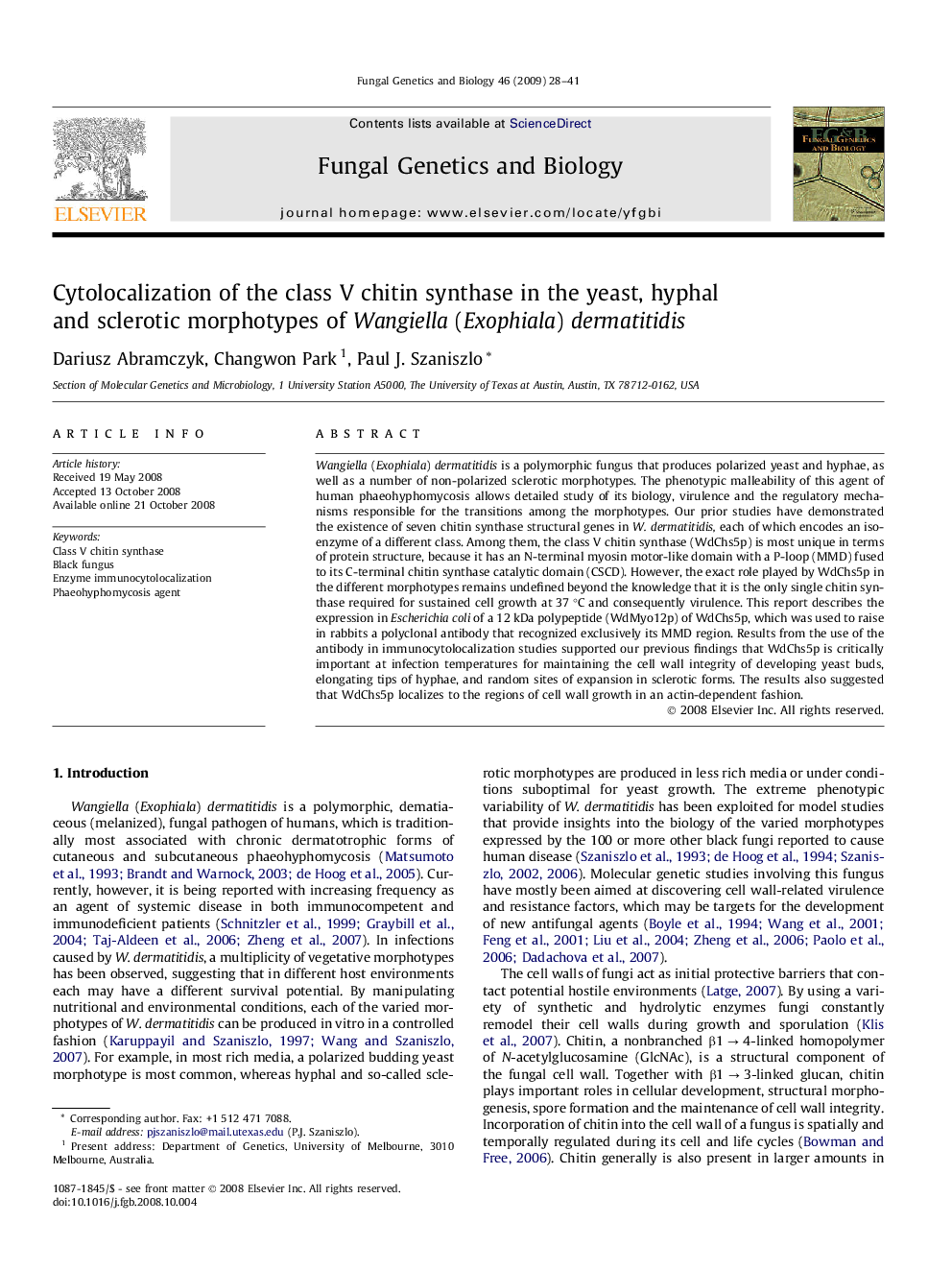| Article ID | Journal | Published Year | Pages | File Type |
|---|---|---|---|---|
| 2181177 | Fungal Genetics and Biology | 2009 | 14 Pages |
Wangiella (Exophiala) dermatitidis is a polymorphic fungus that produces polarized yeast and hyphae, as well as a number of non-polarized sclerotic morphotypes. The phenotypic malleability of this agent of human phaeohyphomycosis allows detailed study of its biology, virulence and the regulatory mechanisms responsible for the transitions among the morphotypes. Our prior studies have demonstrated the existence of seven chitin synthase structural genes in W. dermatitidis, each of which encodes an isoenzyme of a different class. Among them, the class V chitin synthase (WdChs5p) is most unique in terms of protein structure, because it has an N-terminal myosin motor-like domain with a P-loop (MMD) fused to its C-terminal chitin synthase catalytic domain (CSCD). However, the exact role played by WdChs5p in the different morphotypes remains undefined beyond the knowledge that it is the only single chitin synthase required for sustained cell growth at 37 °C and consequently virulence. This report describes the expression in Escherichia coli of a 12 kDa polypeptide (WdMyo12p) of WdChs5p, which was used to raise in rabbits a polyclonal antibody that recognized exclusively its MMD region. Results from the use of the antibody in immunocytolocalization studies supported our previous findings that WdChs5p is critically important at infection temperatures for maintaining the cell wall integrity of developing yeast buds, elongating tips of hyphae, and random sites of expansion in sclerotic forms. The results also suggested that WdChs5p localizes to the regions of cell wall growth in an actin-dependent fashion.
